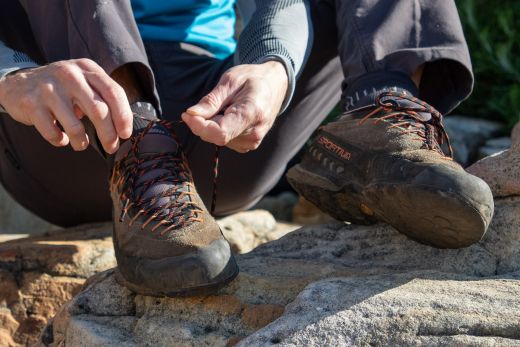What exactly are approach shoes, and why do you need a pair? If you’re new to mountain sports, you might be asking yourself this exact question. In climbing, the hike to a crag is often described as an ‘approach’ because, unlike a hike that follows a trail, the route is likely to involve fields of talus and scree, 3rd and 4th class rock, and countless other obstacles. To safely negotiate such terrain, climbers will usually lace up a pair of approach shoes, trusting the sticky rubber to help them stay surefooted when falling isn’t an option. But approach shoes aren’t just for getting you to the start of a rock climb. There are at least several activities in which you’re likely to benefit from this type of footwear. In this article, I will explain how to choose a pair that will be best suited to your preferred type of adventure.
- Approach shoe features
- Why choose approach shoes over other footwear
- Uses for approach shoes
- What to look for in a pair of approach shoes
- Approach shoe fit
- How to care for approach shoes
Approach shoe features
A cross between hiking shoes and climbing shoes, approach shoes have to be comfortable enough to hike in and technically capable enough to climb 3rd and 4th class terrain. To meet this unique combination of needs, approach shoes are designed with four defining features.
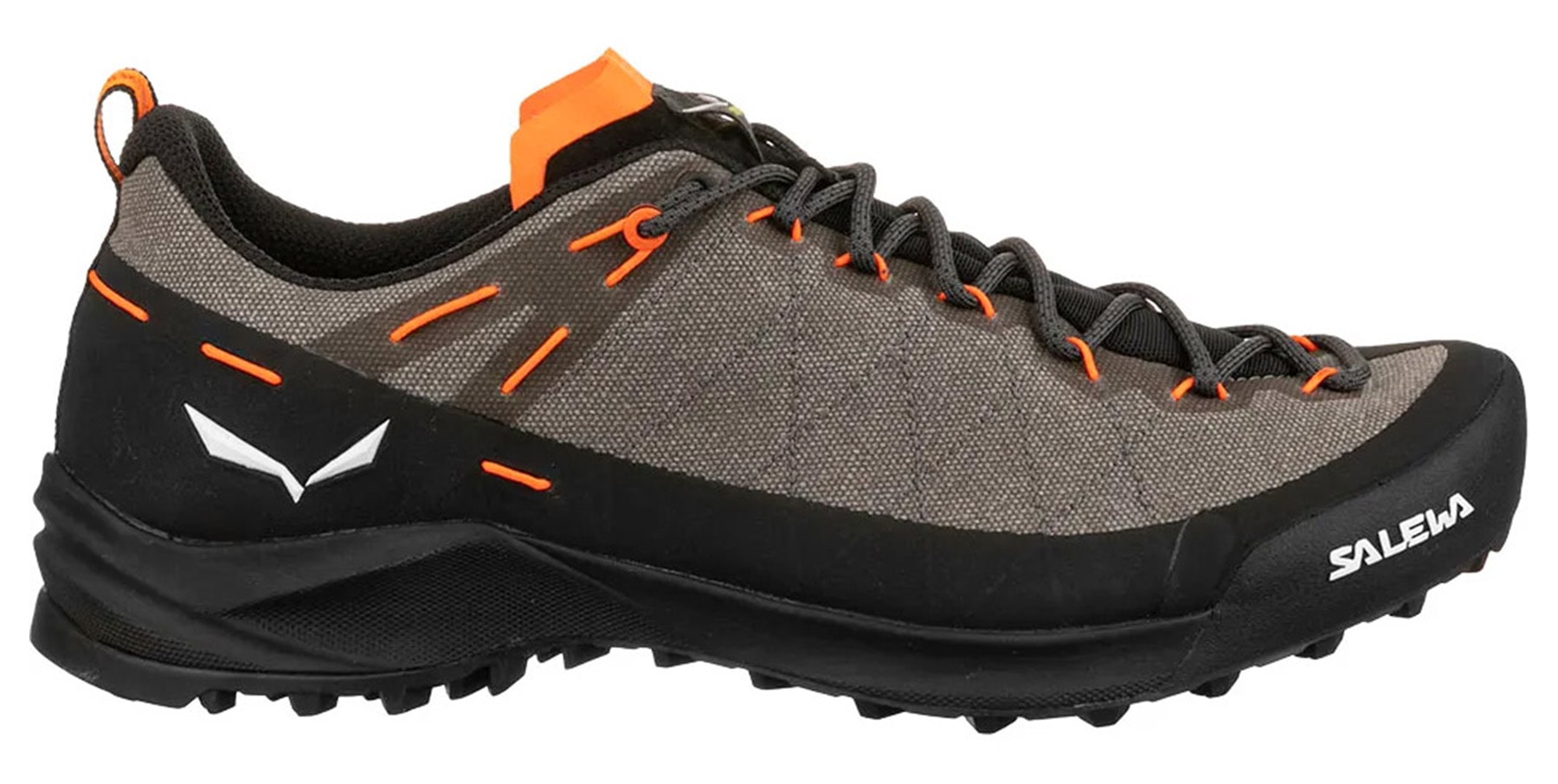
Sticky rubber
The sticky rubber used on the soles of approach shoes is significantly softer than the compounds used on most hiking and running footwear. This gives approach shoes a distinct advantage when it comes to smearing up rock slabs or standing on smaller edges. This improved friction makes approach shoes the obvious choice for exposed and technical terrain. Companies like Vibram make several difficult compounds, so it’s always best to find out if the rubber used on a shoe is sticky (Vibram Megagrip or equivalent).
Tread pattern
Approach shoes can either be more hiking focussed like the La Sportiva TX4 or climbing focussed like the Scarpa Zen Pro. The tread pattern under the toes of climbing-focussed approach shoes is flatter and better suited to maximising surface contact when they’re used for smearing on rock. The tread pattern on hiking-focussed approach shoes, on the other hand, looks more like that on a hiking shoe with large lugs that will grip better in loose substrate.
Snug last and supportive edges
Unlike running shoes which have flexible midsoles and wider toe boxes designed to let one’s toes splay out, approach shoes are generally stiffer and have a more snug shape and fit. This allows for greater precision and support when the wearer has to stand on small edges, but it also makes approach shoes less comfortable than a pair of hiking shoes. It’s here that approach shoe manufacturers have to make a compromise. A shoe can either be better for climbing or offer great hiking comfort. It can’t excel at both.
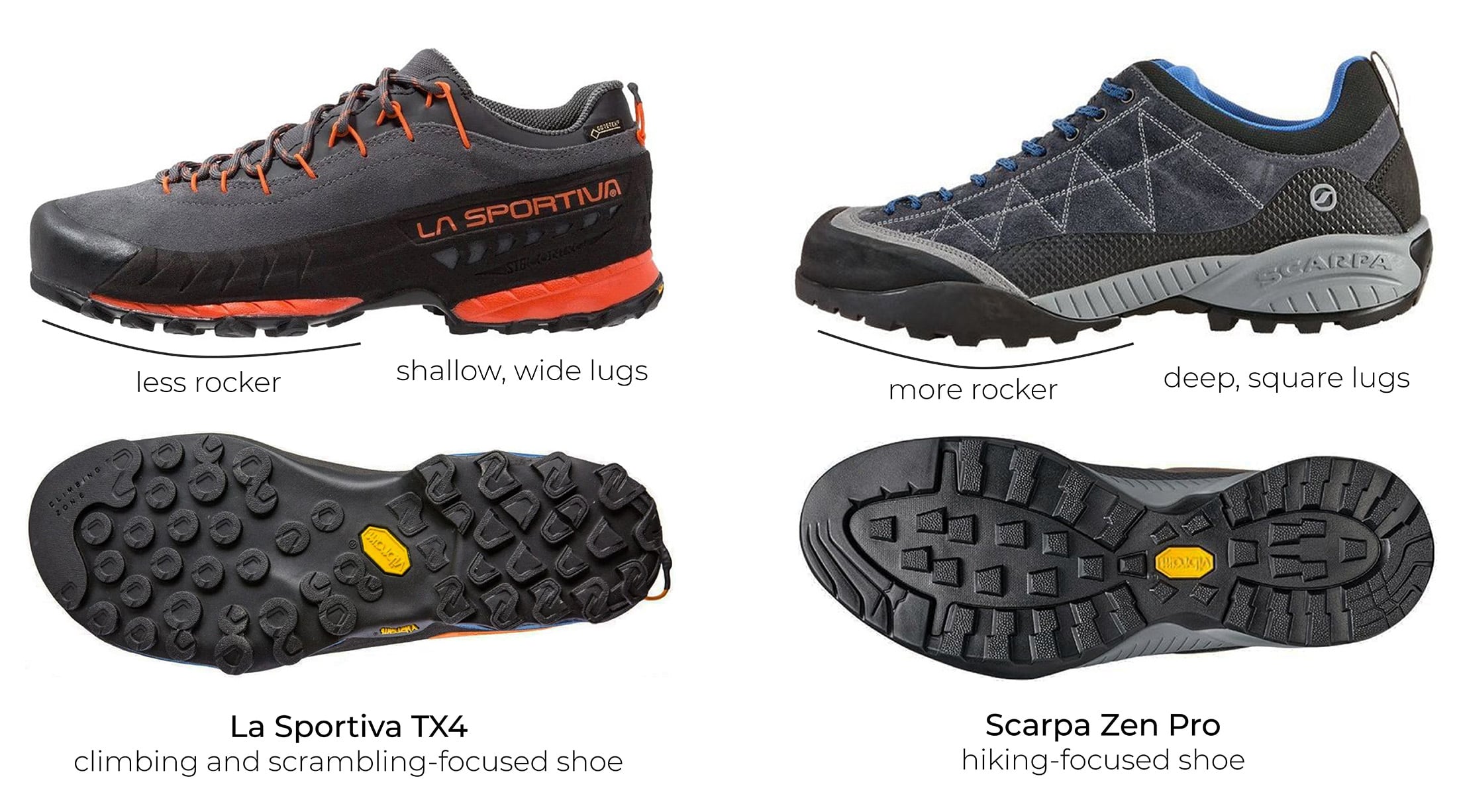
Less or more rocker
Shoes with more rocker (camber) in the toe can make it easier to roll your foot forward as that leg nears the end of a stride, but this advantage is really only noticeable with shoes that have stiffer, more supportive soles. Shoes that have more give in the toe will simply flex under weight, allowing for a natural stride. And it’s important to note that a more pronounced camber in the toe also makes it harder to practise precise footwork on more technical terrain.
Durable uppers with reinforced toe rand
To withstand repeated abuse – all that edging, smearing, and jamming – approach shoes have to be very durable. This usually means full leather uppers reinforced by a protective toe rand also made of sticky rubber. I would only recommend fabric uppers if breathability is very important to you or if you want a lighter and more compressible shoe because you’re going to carry them on a climb (either in a small pack or clipped to your harness).
Why choose approach shoes over other footwear?
Many climbers use trail running shoes to get to and from their local crag as this type of footwear performs just fine on easier approaches. However, when you’ve headed into the backcountry, where an injury would result in a rescue call-out, or even onto steep and more technical terrain closer to home, a pair of approach shoes will make you more surefooted and confident. And if you’re going to tackle any 4th class terrain involving slabs, cracks, or thinly featured faces, they will be absolutely essential.
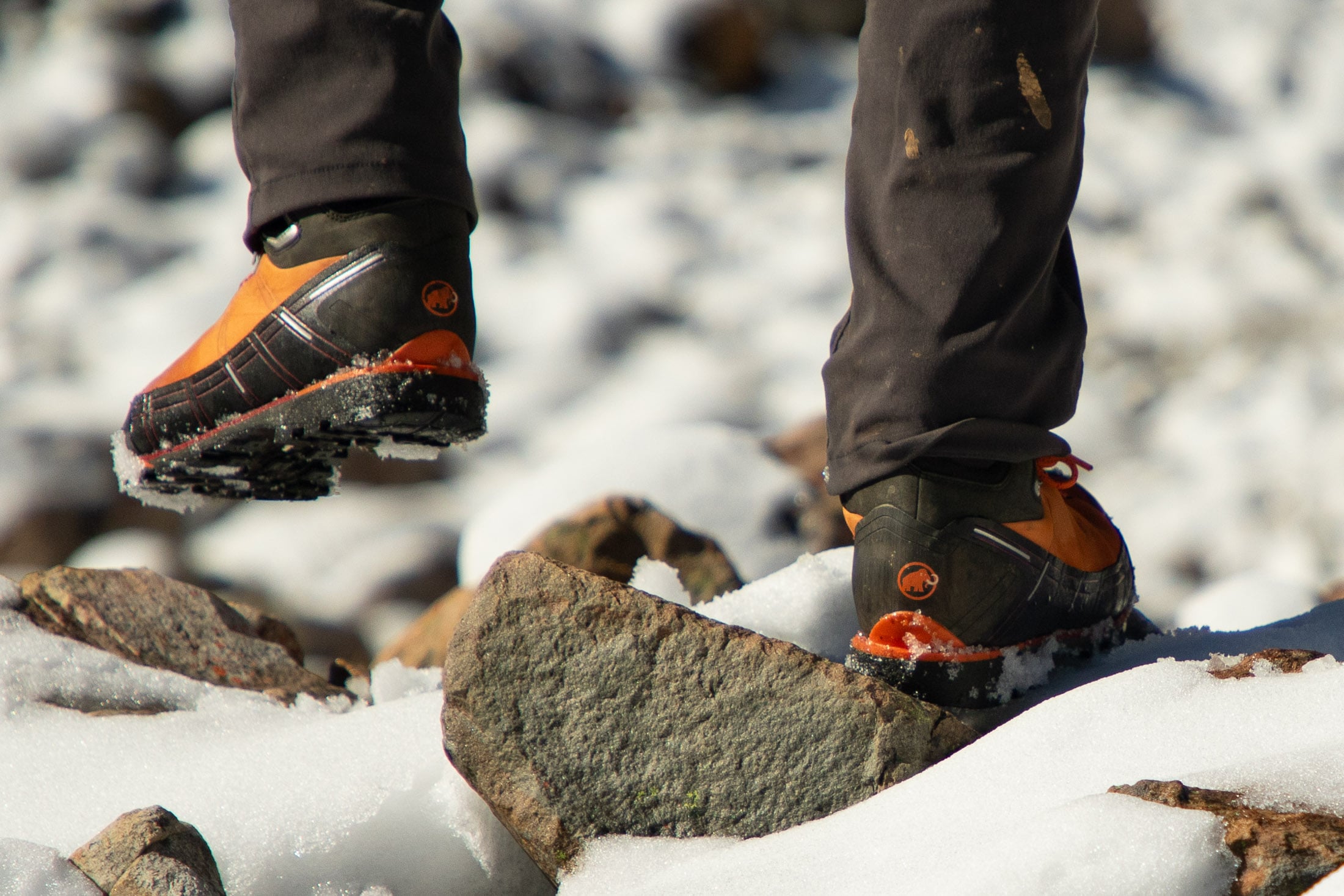
I said ‘essential’, but there is another type of footwear that also performs well on more technical terrain, and that’s the light mountaineering boot. Boots don’t smear quite as well as approach shoes, and they aren’t as sensitive when edging. But on alpine missions that involve snow or glaciers (and the use or crampons), they’re usually a better choice. Even in drier conditions, a pair of boots might be worth the extra weight if it’s very cold and a pair of approach shoes just don’t offer enough insulation. At this intersection where the strengths of approach shoes and mountaineering boots overlap, a decision will probably come down to personal choice.
Uses for approach shoes
Although they were originally designed to be worn on the way to the crag, outdoorsmen have since found many other uses for approach shoes.
Approaches and descents
The obvious use. Regardless of whether it’s a 15-minute walk-in or a 3-hour hike into the backcountry, approach shoes are the obvious choice if you expect to have to negotiate exposed or more technical terrain. You’ll appreciate them most when you have to scramble some 4th class to reach the start of a climb or when you have to make a somewhat sketchy traverse to reach rappel anchors on your descent. But they’ll also prove their worth on easier terrain, especially on the return trip when your legs are tired and your foot placements are quite as precise as they should be. For this, their original purpose, a more technical or climbing-focussed approach shoe is the order of the day.
Scrambling
Approach shoes are also great for hikers who enjoy scrambling and traversing exposed, rocky ridge lines. Again, either climbing ability or hiking comfort has to be made a priority. Most hikers will only attempt easier scrambles (mostly 3rd class), where even a hiking-focussed approach shoe will offer a significant advantage over regular hiking shoes. If, on the other hand, you wanted to up the ante with some 4th class or take on something like a via ferrata, you’d benefit from a more climbing-orientated approach. You’ll notice the extra stiffness, but few users will consider this a major drawback.
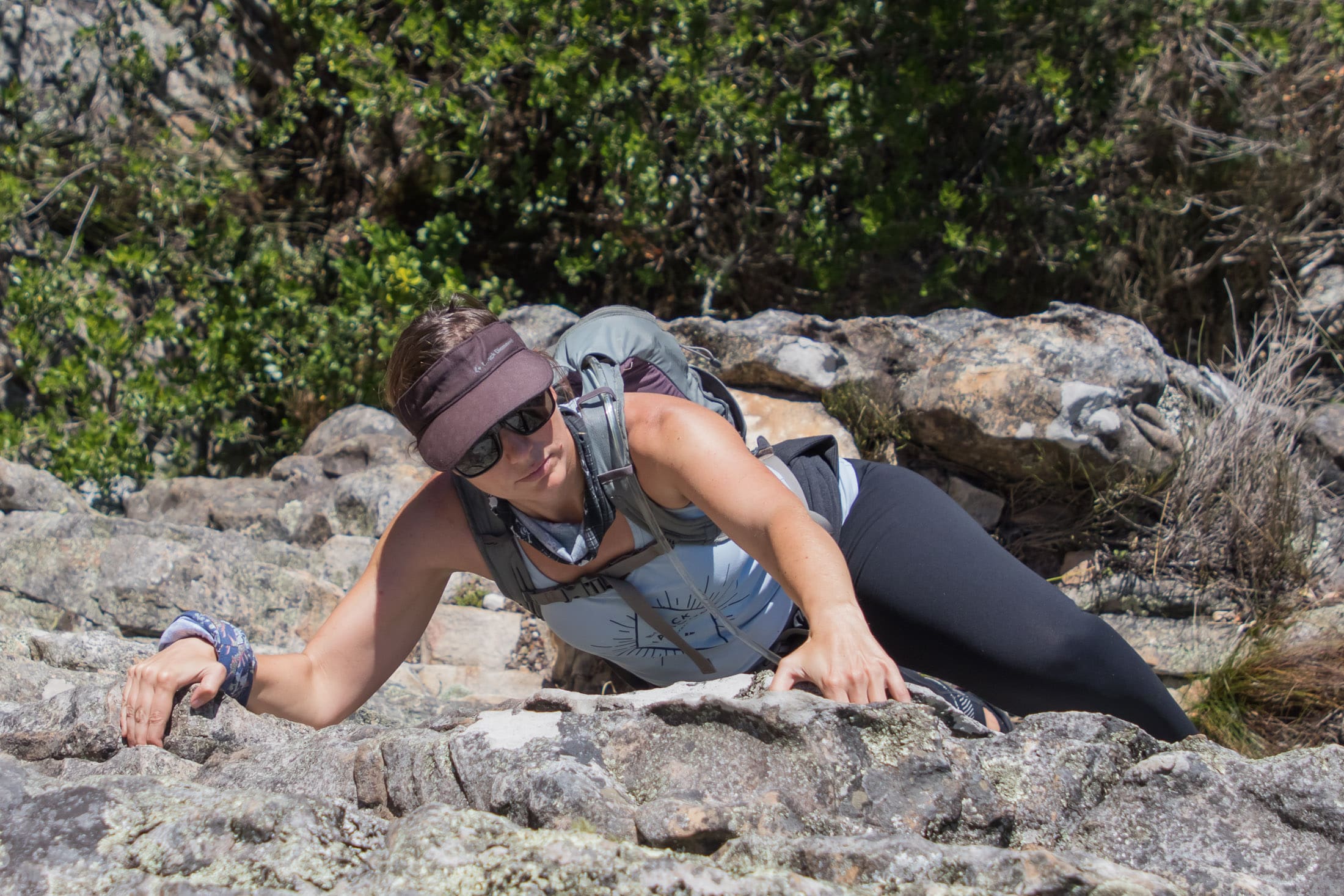
Big wall climbs
Big wall climbing involves a lot of jumaring up fixed ropes and standing in aiders while leading aid pitches – things that are best done while wearing a pair of approach shoes. The best shoes for this purpose are stiff and supportive shoes that don't bend when the climber is standing in aiders or slings. They should also be able to climb relatively well as they will also be used for free climbing short sections, but climbing ability doesn’t need to be a top priority as most big wall climbers will have rock shoes with them if they plan on doing any serious free climbing.
Easy alpine climbs
If your mission involves a ten-mile or longer round trip with some easy 5th class and loads or 3rd and 4th class scrambling, you need nothing more than a pair of approach shoes. By leaving your rock shoes behind and taking a fast and light approach to an alpine mission, you can shave a significant amount of weight from your pack – a top priority on big days out. To do double duty, your approach shoes will need to be well suited to climbing and have plenty of edging power and precision. Of course there are also alpine climbs where the difficulty of crux pitches demand the use of rock shoes, and then your approach shoes can be more hiking-orientated.
Canyoneering
Approach shoes are also a solid choice for canyoneering, especially if your focus is going to be dry canyons with technical rock sections. There are better, more specialised shoes for wet canyons, but if you wanted one pair of shoes for wet canyons, dry canyons, scrambles, and every other mountain activity listed here, a pair of shoes with fast-draining synthetic uppers would fit the bill. The La Sportiva TX3 with their mesh uppers would be a good choice here. Avoid shoes with leather uppers for the same reason – they don’t drain.
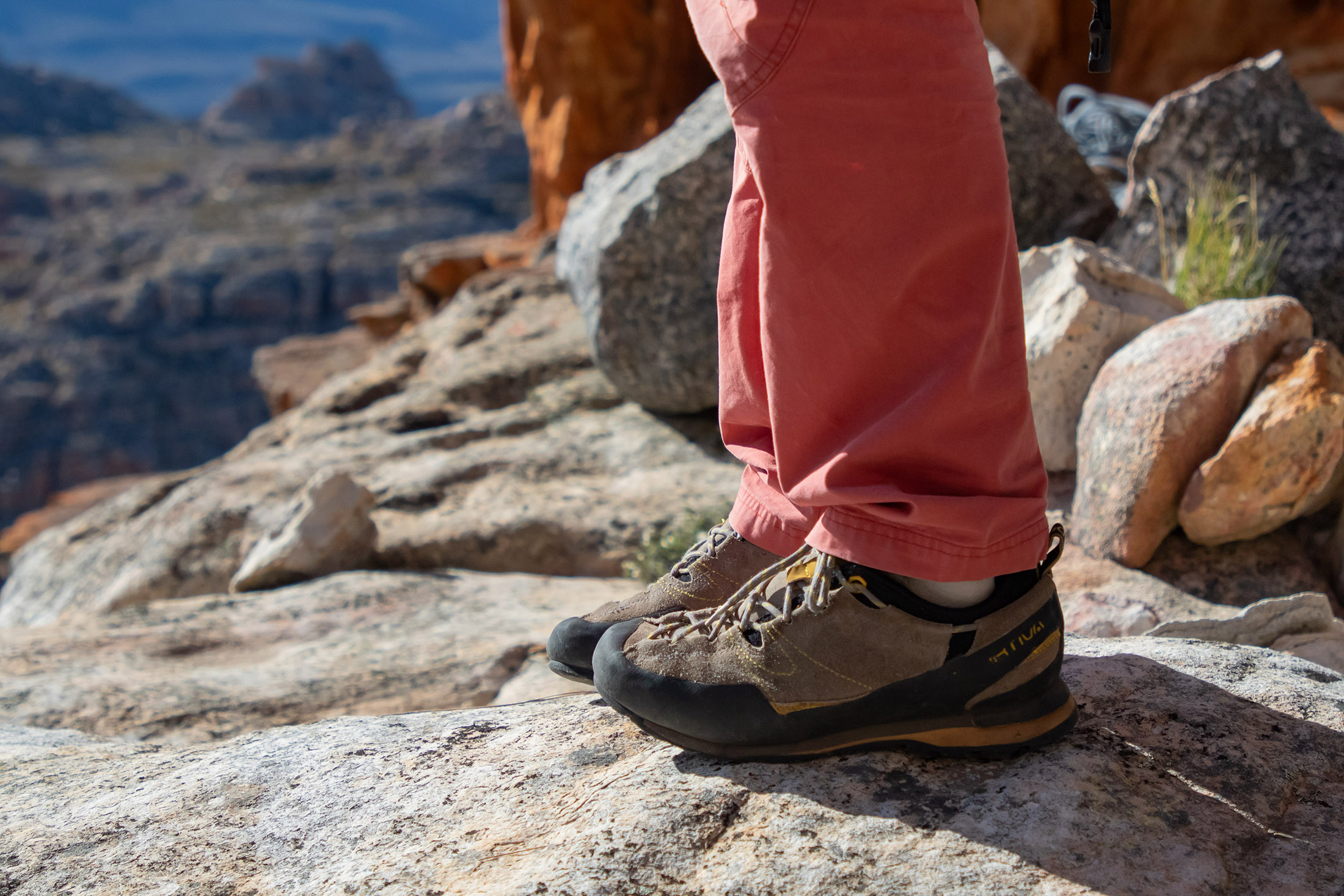
What to look for in a pair of approach shoes
When choosing a new pair of approach shoes, consider the following four factors.
Hiking comfort
Regardless of their intended use, you should be able to hike as far as is necessary in your approach shoes. If they are too uncomfortable and have to be swapped out for other footwear on the hike, they will end up being nothing more than bad climbing shoes. And there’s not much point in carrying heavy, wannabe rock shoes when you could carry a pair of proper climbing shoes. Many users will spend most of their time hiking and scrambling on trails and relatively easy off-trail terrain. The best type of approach shoe for this purpose is one that prioritises hiking comfort. Like every approach shoe on the market, such a shoe will be capable of scaling easier sections of steep or technical rock (much better than hiking shoes) while being just as comfortable as regular trail footwear.
Technical climbing ability
All approach shoes should meet two criteria: they should be comfortable enough to hike distances in, and they should make the wearer feel more surefooted on steeper terrain – at least more surefooted than a pair of trail runners or hiking shoes would. Beyond this, you could choose a shoe that is only slightly better or significantly better on steep rock, depending on what you intend to do with it. If you were going to be scrambling a significant amount of 4th or even 5th class terrain, you would need a shoe that can be used to stand on small edges and maybe even jam the occasional crack. Typically this type of approach shoe has less rocker and a tighter, stiffer toe box for improved edging power and precision (La Sportiva TX4 and TX Guide).
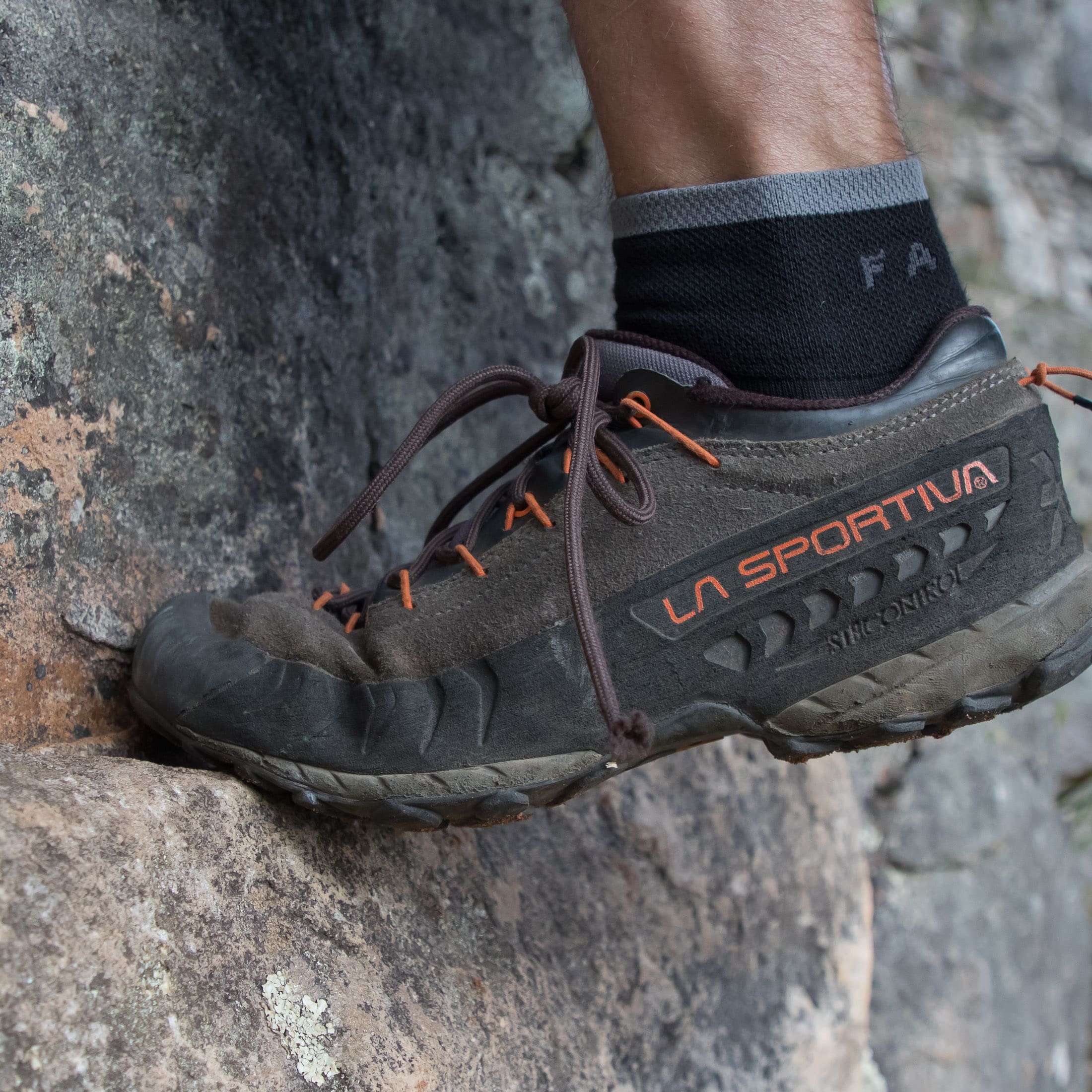
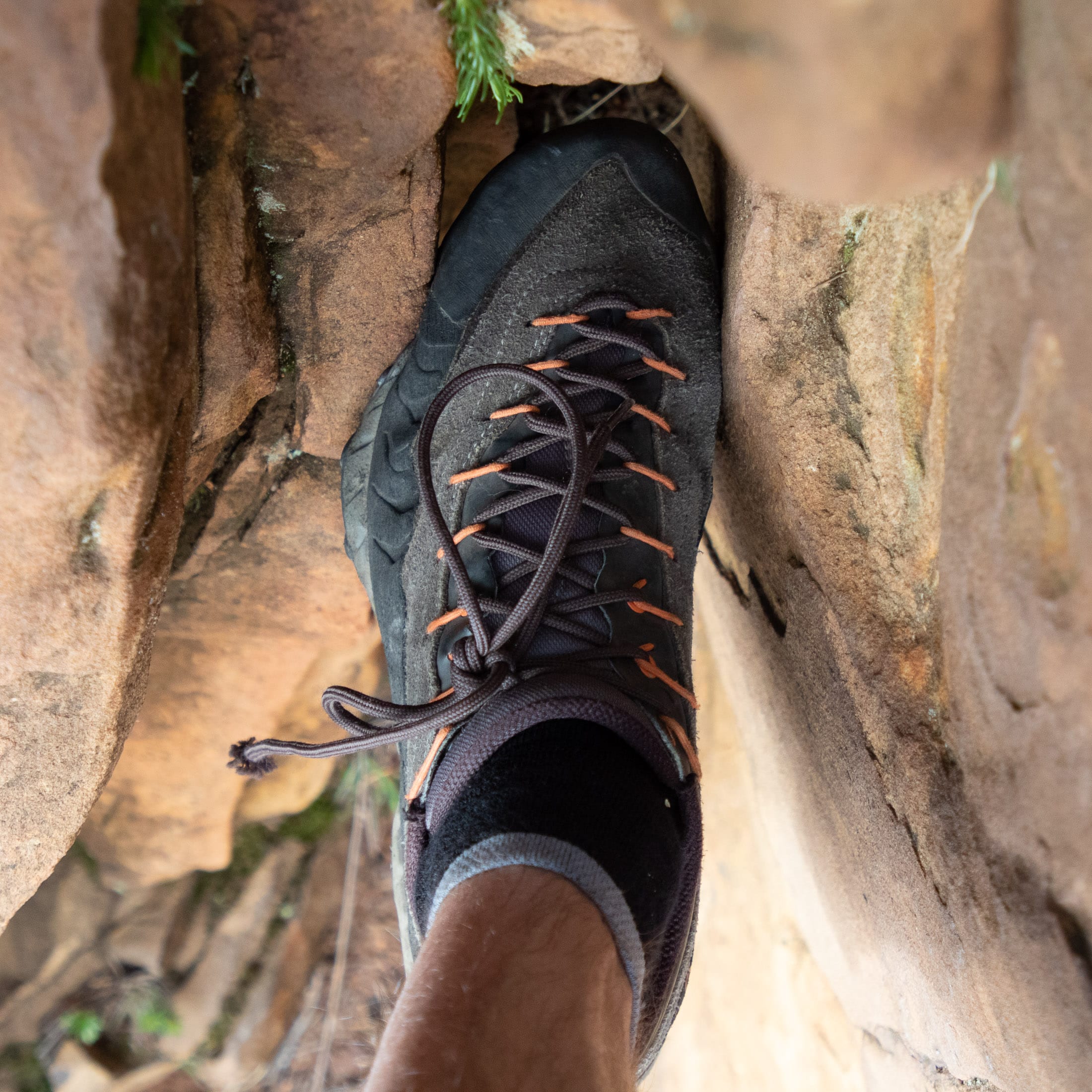
Durability
All approach shoes have a large rubber rand protecting the front and sides of the shoe, but the uppers can still be subject to wear and tear when you wedge the shoes into cracks and kick rocks and scree. Leather is much better than synthetic material when it comes to standing up to such abuse, but then it’s heavier and not as breathable. To me the latter is less of a factor, so a decision usually comes down to shoes that weigh less and those that are more durable. If you’re unlikely to carry your approach shoes with you while climbing, I recommend going with shoes that have durable leather uppers. These will still be good after months of scuffing, kicking, and being jammed into cracks and crevices.
Weight and compactness
Weight and compactness is more of an issue if you are going to carry your approach shoes with you while you climb a rock route. This is usually necessary if you have to walk off after a multi-pitch climb, but you might also decide that you don’t want to make several rappels while wearing your rock shoes or going barefoot. In such situations, you’ll probably have your approach shoes clipped to a rear gear loop or stowed in a small pack. In both cases, you’ll notice the difference between a pair of shoes weighing 600 g and a pair weighing 900 g. And if you’re putting both pairs into the same small pack, compactness will also be a factor. This is where a pair of compressible low-profile shoes like the La Sportiva TX2 prove their worth. This particular model even has built in elastic loops for keeping the two shoes sandwiched together.
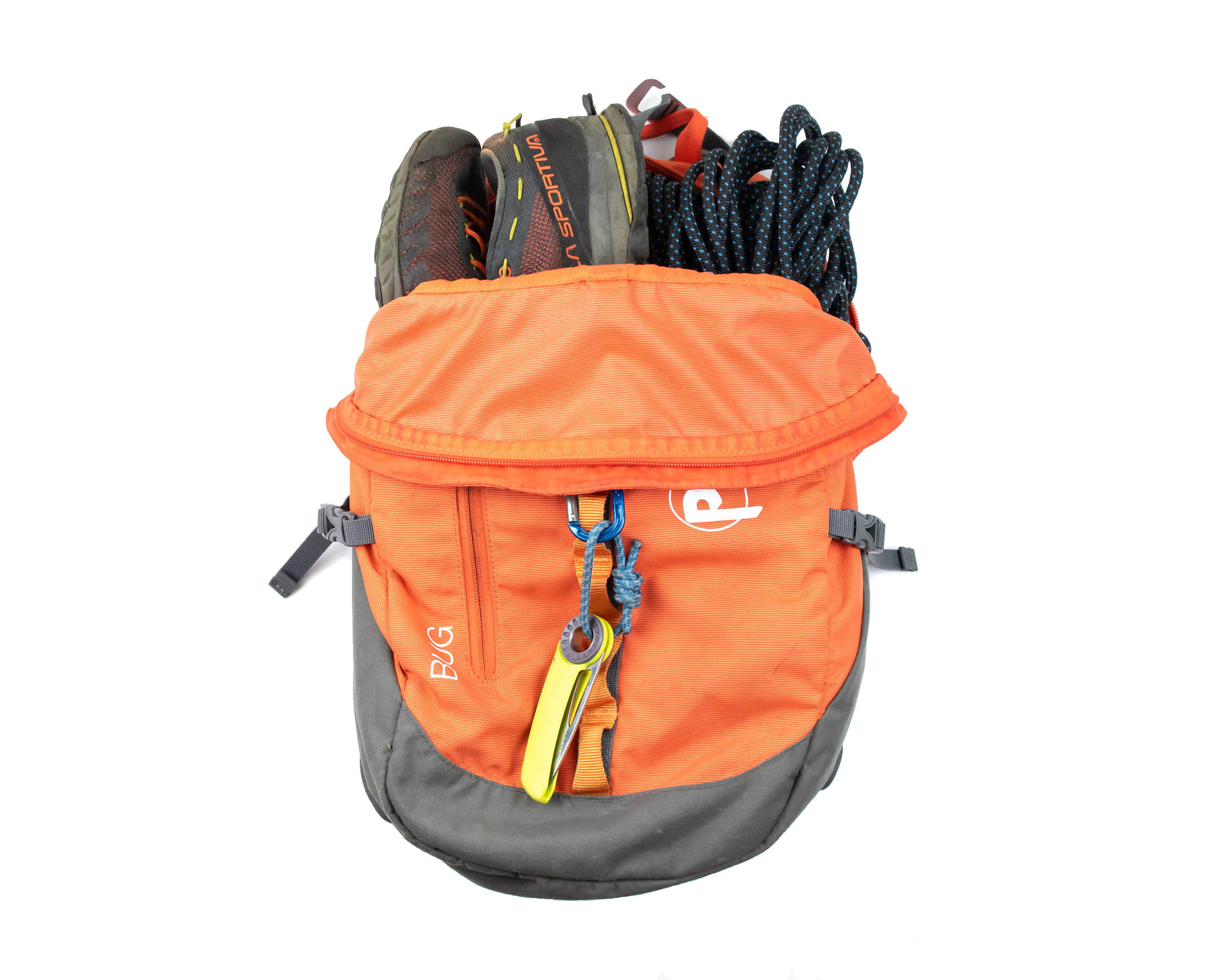
Approach shoe fit
There is always a compromise to be made when choosing a size for a pair of approach shoes. Size them to fit snuggly, and they will climb better but be less comfortable when you hike. Size them to fit like a regular hiking shoe with a bit more room around your toes, and they will be very comfortable to hike in but won’t climb as well. You will have to decide on your priorities and size your shoes accordingly. Just remember that even if your priority is climbing performance, your shoes still need to be comfortable enough to get you to your climb. If you size them too small, you might arrive with your feet bloodied and bruised before you even start climbing.
How to care for approach shoes
The first thing you can do to prolong the life of a pair of approach shoes is keep them as clean as possible, inside and out. Little bits of sand and dirt that work their way into the fabric and seams can cause abrasive wear and tear. Most climbers change into and out of their approach shoes several times during a climbing day. You can take these opportunities to shake out any debris that has gotten inside. You might even want to occasionally remove the insole to get out anything that collected underneath them while also letting any accumulated sweat evaporate. If you hike through mud, give them a quick clean when you get home (or vehicle if you’re on an extended trip). A soft bristle brush and warm water is the best way to remove caked-on mud and dirt.
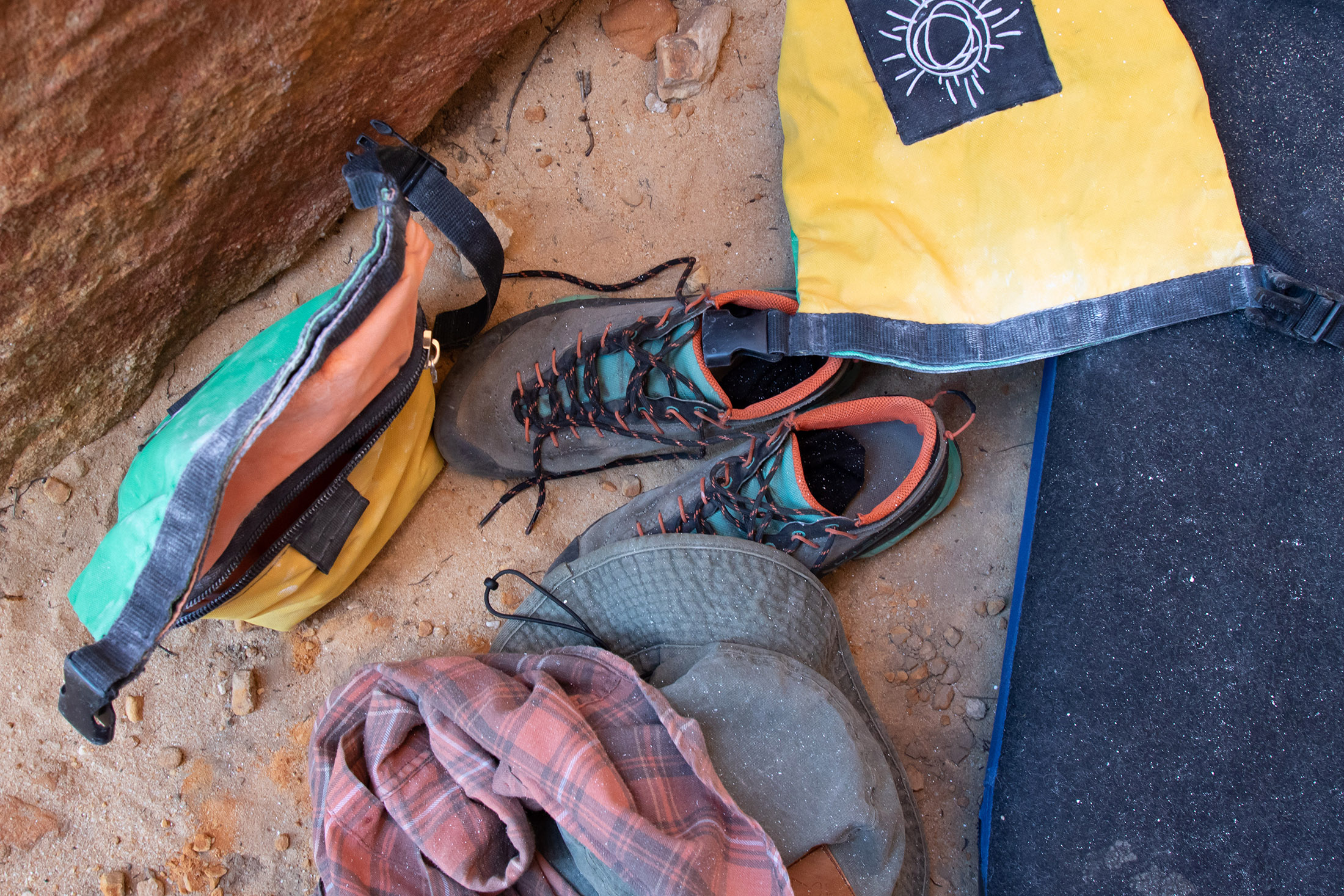
It’s also a good idea to treat leather uppers with a leather conditioning product. Both suede and nubuck leather will benefit from treatment. This is especially important if you’re likely to get your shoes wet when approaching a climb. Untreated leather absorbs more water, which can cause it to shrink or become brittle if a pair of shoes are repeatedly dampened and then dried. Nikwax offers an extensive line of leather conditioners that work well.
Lastly, if you’re going to be using your shoes for a lot of technical climbing, especially on abrasive rock, you might need to reinforce certain high-wear areas on both the upper and toe rand. Seam Grip is best for putting an extra protective layer over uppers while Shoe Goo will work best on the rand.
Get more advice from this gearhead
You now have everything you need to know about choosing your next pair of approach shoes. But don’t stop here. On this website you’ll find many more in-depth gear guides on everything from belay devices to climbing ropes as well as many more how-to articles. You can find these under the different sections in the categories menu, or, better yet, sign up for my newsletter to get all the latest from Trail & Crag delivered straight to your inbox.
